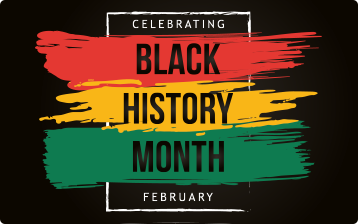by Nancy Silver Hargreaves
February marks Black History Month. We want to highlight some momentous occasions to recognize African American leaders in America.
Black History Month began as “Negro History Week,” which was created in 1926 by Carter G. Woodson, a noted African American historian, scholar, educator, and publisher. It became a month-long celebration in 1976.
Martin Luther King was an American Baptist Minister who became the most visible, outspoken Civil Rights leader of all time. He was most famous for his March on Washington, DC for jobs and freedom on August 28, 1963. The march was to advocate for civil and economic rights of African Americans. Standing in front of the Lincoln Memorial he gave his “I have a Dream” speech which focused on the end to racism. There were about 250,000 people, 75-80% who were black. It was the largest political rallies for human rights in US history. Walter Reuther, President of the United Auto Workers, was the most pivotal and highest ranking organizer of the rally. The march is credited for the passing of the Civil Rights Act of 1964. It preceded the Selma Voting Rights Movement, when national media coverage contributed to passage of the Voting Rights Act of 1965..
Rosa Parks was an American Activist in the Civil Rights Movement and most famous for her pivotal role in the Montgomery bus boycott which took place. The boycott was a political and social protest campaign against the policy of racial segregation on the public transit system in Montgomery, Alabama. The Campaign lasted from December, 1955 when Rosa refused to give up her seat on the bus to a white person to December, 1956 when the Supreme Court voted segregated buses were unconstitutional.
On February 12, 2009, the NAACP marked its 100th anniversary. Spurred by growing racial violence in the early twentieth century, and particularly by race riots in Springfield Illinois in 1908, a group of African American leaders joined together to form a new permanent civil rights organization, NAACP. February 12, 1909 was chosen because it was the centennial anniversary of the birth of Abraham Lincoln.
Jack Johnson became the first African-American man to hold the World Heavyweight Champion boxing title in 1908. He held on to the belt until 1915.
John Mercer Langston was the first black man to become a lawyer in Ohio when he passed the Bar in 1854. When he was elected to the post of Town Clerk for Brownhelm, Ohio in 1855 Langston became one of the first African Americans ever elected to public office in America. John Mercer Langston was also the great-uncle of Langston Hughes, famed poet of the Harlem Renaissance.
Thurgood Marshall was the first African American ever appointed to the United States Supreme Court. He was appointed by President Lyndon B. Johnson, and served on the Supreme Court from 1967 to 1991.
George Washington Carver developed 300 derivative products from peanuts among them cheese, milk, coffee, flour, ink, dyes, plastics, wood stains, soap, linoleum, medicinal oils and cosmetics.
Hiram Rhodes Revels was the first African American ever elected to the United States Senate. He represented the state of Mississippi from February 1870 to March 1871.
Shirley Chisholm was the first African American woman elected to the House of Representatives. She was elected in 1968 and represented the state of New York. She broke ground again four years later in 1972 when she was the first major party African-American candidate and the first female candidate for president of the United States.
The black population of the United States in 1870 was 4.8 million; in 2007, the number of black residents of the United States, including those of more than one race, was 40.7 million.
In 1940, Hattie McDaniel was the first African-American performer to win an Academy Award (the film industry`s highest honor) for her portrayal of a loyal slave governess in Gone With the Wind.
In 1992, Dr. Mae Jemison became the first African American woman to go into space aboard the space shuttle Endeavor. During her 8-day mission she worked with U.S. and Japanese researchers, and was a co-investigator on a bone cell experiment.

